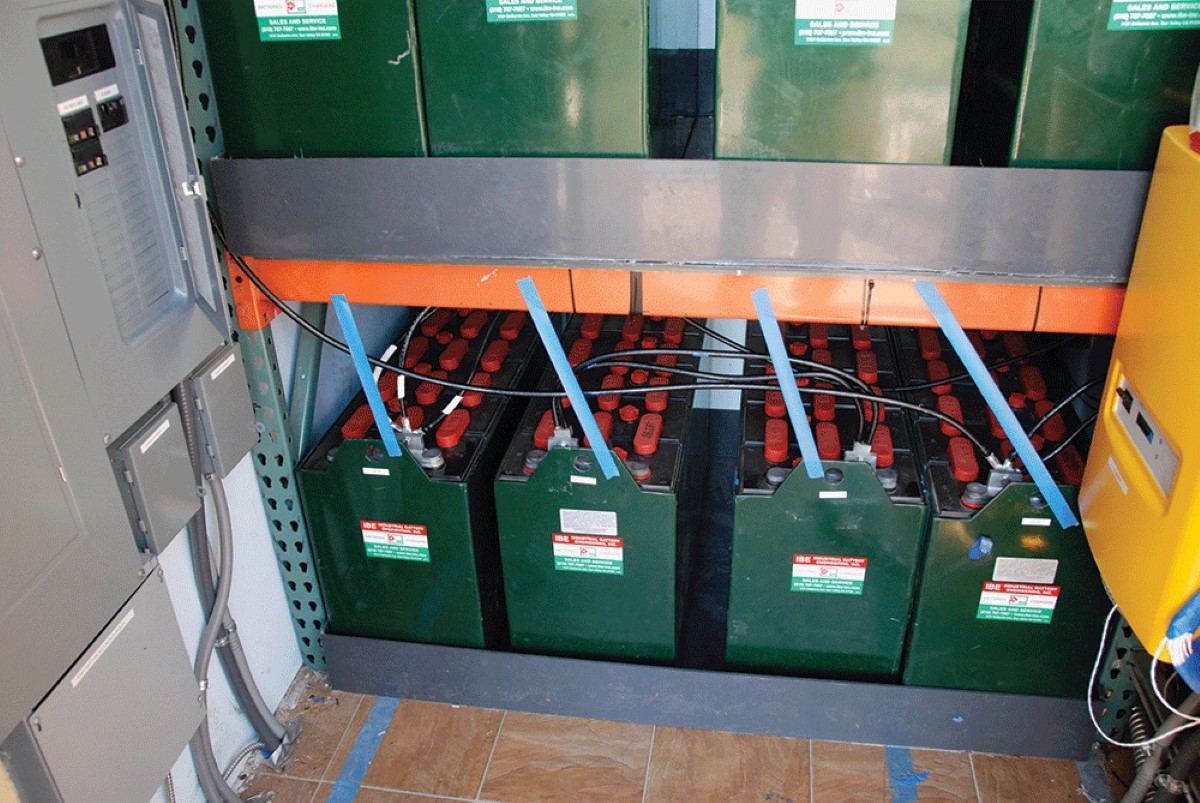

Articles
How To Store A Deep Cycle Battery
Modified: January 6, 2024
"Learn the best tips and methods for proper storage of a deep cycle battery in this informative article. Discover the key steps to extend its lifespan and maintain its optimal performance."
(Many of the links in this article redirect to a specific reviewed product. Your purchase of these products through affiliate links helps to generate commission for Storables.com, at no extra cost. Learn more)
Introduction
Deep cycle batteries are an essential component of many electrical systems, providing reliable power storage for a variety of applications. Whether you have a deep cycle battery for your boat, RV, or solar power system, proper storage is crucial to maintain its performance and extend its lifespan.
In this article, we will guide you through the process of storing a deep cycle battery effectively. We’ll cover everything from choosing the right storage location to cleaning and preparing the battery, as well as tips for monitoring and maintaining it during storage. By following these steps, you can ensure that your deep cycle battery remains in optimal condition, ready to power your devices when you need it.
So, let’s dive into the details of how to store a deep cycle battery and keep it protected for long-term storage.
Key Takeaways:
- Properly storing a deep cycle battery involves choosing the right location, cleaning and preparing the battery, disconnecting and removing it from the device, charging it before storage, and monitoring its condition to ensure longevity and optimal performance.
- Selecting a cool, dry storage location, choosing the appropriate storage method, and regularly maintaining and inspecting the battery are crucial for preserving its health and readiness for future use.
Read more: How To Store Batteries
Understanding Deep Cycle Batteries
Before we delve into the specifics of storing a deep cycle battery, it’s important to understand what exactly a deep cycle battery is and how it differs from other types of batteries.
Unlike a traditional car battery, which provides a burst of high current for starting the engine, deep cycle batteries are designed to discharge a steady amount of current over an extended period. They are built to withstand repeated deep discharging and recharging cycles, making them ideal for applications that require continuous power, such as marine, RV, and solar power systems.
Deep cycle batteries are typically constructed with thicker plates and denser active material, allowing for a longer lifespan and greater durability. They come in various types, including flooded lead-acid, sealed lead-acid, gel, and AGM batteries. Each type has its own advantages and maintenance requirements, so be sure to check the manufacturer’s recommendations for the specific type of deep cycle battery you have.
Understanding the unique characteristics of deep cycle batteries is essential for proper storage. These batteries are sensitive to temperature and should not be stored in extreme heat or cold. Additionally, they require regular maintenance to ensure optimal performance and longevity.
Now that we have a basic understanding of deep cycle batteries, let’s move on to the next step: choosing the right storage location.
Choosing the Right Storage Location
When it comes to storing a deep cycle battery, the first step is to select an appropriate storage location. Ideally, you want to choose a place that provides the right conditions to ensure the battery’s longevity and performance.
The storage location should be well-ventilated to prevent the buildup of potentially harmful gases emitted during the battery’s charging and discharging cycles. Avoid storing the battery in enclosed spaces, such as closets or cabinets, as this can increase the risk of gas accumulation.
Additionally, it’s important to keep the battery away from sources of heat or extreme temperatures. Exposure to high heat can cause the battery to lose its charge more quickly and may lead to damage or reduced lifespan. On the other hand, extreme cold can negatively affect the battery’s performance and may even cause it to freeze, potentially leading to irreversible damage.
Another factor to consider is the accessibility of the storage location. You want to choose a place that allows for easy inspection, maintenance, and charging when necessary. This can help you stay on top of the battery’s condition and ensure it is ready for use when needed.
Lastly, consider the security of the storage location. Deep cycle batteries can be valuable and are often targeted by thieves. If possible, choose a storage area that provides adequate security measures, such as lockable cabinets or a designated battery storage room.
By carefully selecting the right storage location, you can create a safe and conducive environment for your deep cycle battery. This will help preserve its performance and extend its overall lifespan.
Cleaning and Preparing the Battery
Before storing a deep cycle battery, it’s important to clean and prepare it to ensure optimal performance and prevent any potential damage during the storage period. Here are some steps to follow:
- Clean the battery: Start by visually inspecting the battery for any signs of corrosion or dirt. If you notice any buildup of dirt or corrosion on the battery terminals or casing, clean it off using a solution of baking soda and water or a battery cleaning agent. Use a brush or a cloth to scrub away the dirt gently. Be sure to wear protective gloves and eye goggles while performing this task.
- Inspect the battery terminals: After cleaning the battery, inspect the terminals for any signs of damage or wear. Ensure that the terminals are free from corrosion and are securely connected to the battery. If you notice any issues, such as loose or corroded terminals, it’s important to address them before storing the battery.
- Check the electrolyte levels: If you have a flooded lead-acid deep cycle battery, check the electrolyte levels. Ensure that the plates are fully submerged in the electrolyte solution. If the levels are low, you can top up the battery with distilled water to the appropriate level as recommended by the manufacturer. Avoid overfilling the battery, as this can lead to electrolyte leakage during the charging process.
- Test the battery voltage: Use a digital multimeter to measure the battery’s voltage. A fully charged battery should have a voltage reading within the manufacturer’s recommended range. If the voltage is low, it may indicate that the battery requires charging before storage.
- Apply a protective coating: To further protect the battery during storage, consider applying a thin layer of corrosion inhibitor or a battery terminal protector spray on the terminals and exposed metal surfaces. This can help prevent the formation of corrosion and extend the battery’s lifespan.
By following these cleaning and preparation steps, you can ensure that your deep cycle battery is in optimal condition before storage. This will help maintain its performance and prevent any potential issues during the storage period.
Disconnecting and Removing the Battery
When it comes to storing a deep cycle battery, it’s essential to disconnect and remove it from the device or system it powers. This step is crucial to prevent any parasitic drain or accidental discharge of the battery during the storage period. Here’s how to disconnect and remove the battery:
- Turn off the device or system: Before disconnecting the battery, make sure to turn off the device or system it powers. This will help prevent any electrical shocks or accidental activations while handling the battery.
- Wear protective gear: Put on protective gloves and eye goggles to ensure your safety while handling the battery. Deep cycle batteries contain corrosive materials, and it’s important to take proper precautions.
- Disconnect the negative terminal: Start by disconnecting the negative terminal (marked with a “-“) of the battery. Use an appropriate-sized wrench or socket to loosen the terminal nut. Once loose, carefully remove the terminal cable from the battery post. Repeat the same process for the positive terminal (marked with a “+”).
- Remove any mounting brackets or hold-downs: If your deep cycle battery is secured with mounting brackets or hold-downs, remove them carefully. This will allow you to safely lift the battery out of its compartment or mounting area.
- Lift and remove the battery: With the terminals disconnected and any mounting hardware removed, carefully lift the battery out of its location. Be cautious as deep cycle batteries can be heavy. Use proper lifting techniques to avoid strain or injury.
- Place the battery on a stable surface: Once removed, place the battery on a stable surface away from any flammable materials or sources of heat. Avoid placing the battery directly on a concrete floor, as this can cause discharge.
By following these steps, you can safely disconnect and remove the deep cycle battery from its device or system. This will prevent any drain on the battery and ensure its integrity during the storage period.
Read more: How To Store A Battery
Charging the Battery Before Storage
One essential step before storing a deep cycle battery is to ensure that it is fully charged. A fully charged battery will have the maximum capacity and will be better able to withstand the discharge that naturally occurs during storage. Here are some steps to follow when charging your deep cycle battery before storage:
- Inspect the battery voltage: Use a digital multimeter to measure the battery’s voltage. A fully charged deep cycle battery should have a voltage reading within the manufacturer’s recommended range. If the voltage is too low, it indicates that the battery requires charging.
- Choose the appropriate charger: Select a charger that is specifically designed for deep cycle batteries. Avoid using automotive or conventional chargers that may not provide the appropriate charging profile for a deep cycle battery. Consult the battery manufacturer’s recommendations or the charger’s documentation to ensure compatibility.
- Connect the charger to the battery: Connect the charger’s positive clamp to the positive terminal of the battery and the negative clamp to the negative terminal. Ensure that the clamps are securely attached and there is good contact between the clamps and the battery terminals.
- Set the charger to the correct charging mode: Follow the charger’s instructions to select the appropriate charging mode for your deep cycle battery. Different types of deep cycle batteries may require different charging voltages and charging durations. It’s important to set the charger to the recommended charging profile to avoid overcharging or undercharging the battery.
- Start the charging process: Once the charger is connected and set correctly, start the charging process. Monitor the charging progress and ensure that the charger is functioning properly. Some chargers may have built-in safety features, such as automatic shut-off, to prevent overcharging. However, it is recommended to regularly check the charger and battery during the charging process.
- Monitor the battery voltage: Periodically check the battery’s voltage while it is charging. The voltage should gradually increase as the battery charges. Once the battery reaches its recommended fully charged voltage, the charging process is complete.
- Disconnect the charger: After the battery is fully charged, disconnect the charger from the battery terminals. Ensure that all connections are removed properly to avoid any sparks or electrical hazards.
Charging your deep cycle battery before storage ensures that it is in the best condition for long-term storage. A fully charged battery will have a higher capacity to withstand self-discharge and will be ready for use when you need it again.
When storing a deep cycle battery, it’s important to keep it in a cool, dry place and ensure it is fully charged before storing. It’s also a good idea to check the battery periodically and recharge it if necessary to prevent sulfation.
Choosing the Storage Method
After you have prepared your deep cycle battery for storage, the next step is to choose the appropriate storage method. The right storage method will help protect your battery from damage, ensure its longevity, and allow for easy maintenance. Here are some considerations to keep in mind when selecting the storage method:
- Off-Grid vs. Grid-Connected Storage: If you are storing the battery for off-grid applications like RVs or boats, you may opt to disconnect the battery completely from any external power sources. On the other hand, if your battery is part of a grid-connected solar power system, it may be beneficial to keep it connected to the system with appropriate safety measures in place.
- Battery Enclosure or Box: Consider storing your deep cycle battery in a battery enclosure or box. This can help protect it from physical damage, dust, and other contaminants. Look for an enclosure that provides proper ventilation to prevent gas buildup and excessive heat. Ensure that the enclosure is sturdy and securely closed to avoid any accidents or unauthorized access.
- Battery Rack or Stand: Another storage option is to use a battery rack or stand. These can help keep the battery off the ground and provide a stable and organized storage solution. Choose a rack or stand that is specifically designed for deep cycle batteries and can securely hold the weight of the battery.
- Vertical or Horizontal Orientation: Consider whether to store your battery vertically or horizontally. This may depend on the specific battery type and size, as some batteries are designed to be stored in a particular orientation. Consult the manufacturer’s guidelines or specifications for the recommended orientation of your deep cycle battery.
- Labeling: Properly label the storage area with clear signs indicating the presence of batteries and any safety precautions to be observed. This is particularly important if the storage area is accessed by multiple individuals or in a commercial setting.
- Safety Precautions: Take necessary safety precautions when storing your deep cycle battery. Keep it away from flammable materials and sources of heat, and avoid exposing it to extreme temperatures. Ensure proper ventilation in the storage area to prevent gas buildup. If storing multiple batteries, maintain proper spacing between them to avoid short circuits.
By considering these factors and choosing the appropriate storage method, you can ensure the safety and longevity of your deep cycle battery during the storage period. It will be protected from damage and ready for use when you need it again.
Storing the Battery in a Cool and Dry Place
Choosing the right storage location for your deep cycle battery is essential, and one of the key factors to consider is maintaining a cool and dry environment. Proper temperature and humidity conditions can significantly impact the performance and lifespan of the battery. Here are some tips for storing your battery in a cool and dry place:
- Avoid extreme temperatures: High temperatures can accelerate the self-discharge rate of the battery, leading to a reduction in its overall capacity. Avoid storing the battery in areas exposed to direct sunlight or near heat sources. Similarly, extremely cold temperatures can have a negative impact on the battery’s performance. Choose a location where the temperature remains within a moderate range.
- Control humidity levels: Moisture can potentially damage the battery’s terminals and casing. It is important to store the battery in a dry environment to prevent corrosion. Avoid storing the battery in areas prone to high humidity, such as basements, as this can lead to condensation. If necessary, you can use dehumidifiers or moisture-absorbing products in the storage area to maintain low humidity levels.
- Avoid exposure to water: Ensure that the storage area is free from water leaks or any potential water damage. Keep the battery elevated or in a waterproof container to protect it from accidental spills or flooding.
- Provide proper ventilation: While it is important to keep the storage area dry, it is equally important to ensure proper ventilation to prevent gas buildup. Deep cycle batteries release gases during charging and discharging cycles, and adequate ventilation will help dissipate these gases. Avoid storing the battery in tightly sealed or airtight spaces.
- Maintain a stable environment: Fluctuations in temperature and humidity can negatively affect the battery’s performance and lead to condensation. Choose a storage area that maintains a relatively stable environment to minimize these fluctuations.
By storing your deep cycle battery in a cool and dry place, you can help maintain its performance, prevent corrosion, and extend its overall lifespan. This will ensure that the battery is in peak condition when you need to use it again.
Monitoring the Battery During Storage
Even though your deep cycle battery is safely stored, it’s important to periodically monitor its condition during the storage period. Regular monitoring will help ensure that the battery remains in good health and can alert you to any potential issues that may arise. Here are some tips for monitoring your battery during storage:
- Check the battery voltage: Periodically measure the battery’s voltage using a digital multimeter. Compare the reading to the recommended voltage range provided by the manufacturer. If you notice a significant drop in voltage, it may indicate that the battery is self-discharging more rapidly than expected. In such cases, you may need to recharge the battery to maintain its capacity.
- Inspect the battery’s exterior: Visually inspect the battery for any signs of damage, leakage, or corrosion. Look for bulging, cracks, or signs of electrolyte residue around the terminals. If you notice any abnormalities, it may indicate a problem with the battery. Address these issues promptly to prevent further damage or potential hazards.
- Monitor the storage environment: Continuously monitor the temperature and humidity levels in the storage area. Use a thermometer and humidity monitor to ensure that the conditions remain within the recommended range. If you notice significant deviations from the optimal conditions, you may need to take appropriate measures to adjust the environment or relocate the battery to a more suitable location.
- Ensure proper ventilation: Check the ventilation in the storage area to ensure that gases emitted by the battery are adequately dispersed. Make sure there is no obstruction to the airflow around the battery. If necessary, provide additional ventilation to maintain a safe environment.
- Perform maintenance tasks: During the monitoring process, perform routine maintenance tasks as needed. This may include cleaning the terminals, checking the electrolyte levels (if applicable), and reapplying protective coatings. Regular maintenance will help keep the battery in optimal condition and prevent any potential issues.
- Keep a record: Maintain a record of the monitoring activities, including voltage readings, inspection dates, and any maintenance performed. This will help you keep track of the battery’s condition over time and identify any patterns or trends in its performance.
By actively monitoring your deep cycle battery during the storage period, you can catch any potential problems early and take necessary action to maintain its performance. Regular checks and maintenance tasks will ensure that the battery remains in good condition and is ready for use when you need it.
Read more: How To Seed Cycle
Regular Maintenance and Inspection
Maintaining and inspecting your deep cycle battery regularly, even during storage, is crucial for its long-term performance and lifespan. Regular maintenance tasks will help identify and address any potential issues that may arise. Here are some key maintenance and inspection practices to follow:
- Clean the battery terminals: Regularly clean the battery terminals to prevent the buildup of corrosion. Use a mixture of baking soda and water or a battery cleaning agent to gently scrub away any residue. Ensure that the terminals are free from dirt, debris, and corrosion, as this can affect the battery’s performance and charging efficiency.
- Inspect the battery casing: Regularly inspect the battery casing for any signs of damage, cracks, or bulging. These can indicate internal issues or excessive pressure within the battery. If you notice any abnormalities, consult a professional or contact the battery manufacturer for further assistance.
- Check the electrolyte levels (if applicable): If you have a flooded lead-acid deep cycle battery, check the electrolyte levels regularly. Ensure that the plates are fully submerged in the electrolyte solution. If the levels are low, top up the battery with distilled water as per the manufacturer’s recommendations. Avoid overfilling, as this can lead to electrolyte leakage during the charging process.
- Monitor the battery temperature: Keep an eye on the battery’s temperature during storage. If the temperature exceeds the manufacturer’s recommended range, it may indicate a potential issue. It could be a result of excessive self-discharge or an underlying problem with the battery. Consult the manufacturer’s guidelines or seek professional advice if necessary.
- Perform maintenance charging if needed: If you notice a significant drop in the battery’s voltage during storage, it may be necessary to perform maintenance charging. This helps counteract self-discharge and keeps the battery’s capacity optimized. Follow the recommended charging procedure and ensure that you use a charger suitable for deep cycle batteries.
- Keep the battery documentation: Retain the battery documentation, including the user manual, warranty information, and any other relevant documents. These resources will provide valuable information on recommended maintenance practices, optimal charging methods, and specifications specific to your deep cycle battery.
By following these regular maintenance and inspection practices, you can ensure that your deep cycle battery remains in good condition even during storage. Proactive maintenance will prevent potential issues, prolong the battery’s lifespan, and ensure reliable performance when you need it.
Conclusion
Properly storing a deep cycle battery is essential to maintain its performance, extend its lifespan, and ensure it is ready for use when you need it. By following the steps outlined in this article, you can ensure that your battery remains in optimal condition during the storage period.
We started by understanding the unique characteristics of deep cycle batteries and the importance of choosing the right storage location. We emphasized the need for a cool, dry, well-ventilated area that is easily accessible and secure.
Next, we discussed the importance of cleaning and preparing the battery before storage, highlighting the need to remove any dirt or corrosion and ensure proper electrolyte levels (if applicable). Disconnecting and removing the battery from the device or system it powers was also emphasized to prevent any parasitic drain or accidental discharge.
Charging the battery before storage ensures that it is at its maximum capacity, allowing it to withstand self-discharge more effectively. We discussed the selection of an appropriate charger, how to connect it to the battery, and the importance of monitoring the charging process.
Choosing the right storage method, such as using a battery enclosure or rack, and ensuring proper labeling and safety precautions are essential. We emphasized the importance of storing the battery in a cool and dry place, avoiding extreme temperatures, controlling humidity levels, providing ventilation, and maintaining a stable environment.
Monitoring the battery during storage is crucial to identify any issues that may arise. Regular voltage checks, visual inspections, and maintaining an appropriate storage environment will help ensure the battery’s health and identify any necessary maintenance tasks.
Lastly, we discussed the importance of regular maintenance and inspection, including cleaning the terminals, inspecting the casing, checking electrolyte levels (if applicable), monitoring temperature, and performing maintenance charging if needed. Keeping documentation and following manufacturer recommendations for maintenance further promotes the battery’s longevity.
In conclusion, by following these guidelines for storing a deep cycle battery properly, you can ensure its longevity, performance, and readiness for future use. Remember, every battery and storage situation is unique, so always refer to the manufacturer’s recommendations and seek professional advice when needed. With diligent care and maintenance, your deep cycle battery will provide reliable power for years to come.
Frequently Asked Questions about How To Store A Deep Cycle Battery
Was this page helpful?
At Storables.com, we guarantee accurate and reliable information. Our content, validated by Expert Board Contributors, is crafted following stringent Editorial Policies. We're committed to providing you with well-researched, expert-backed insights for all your informational needs.

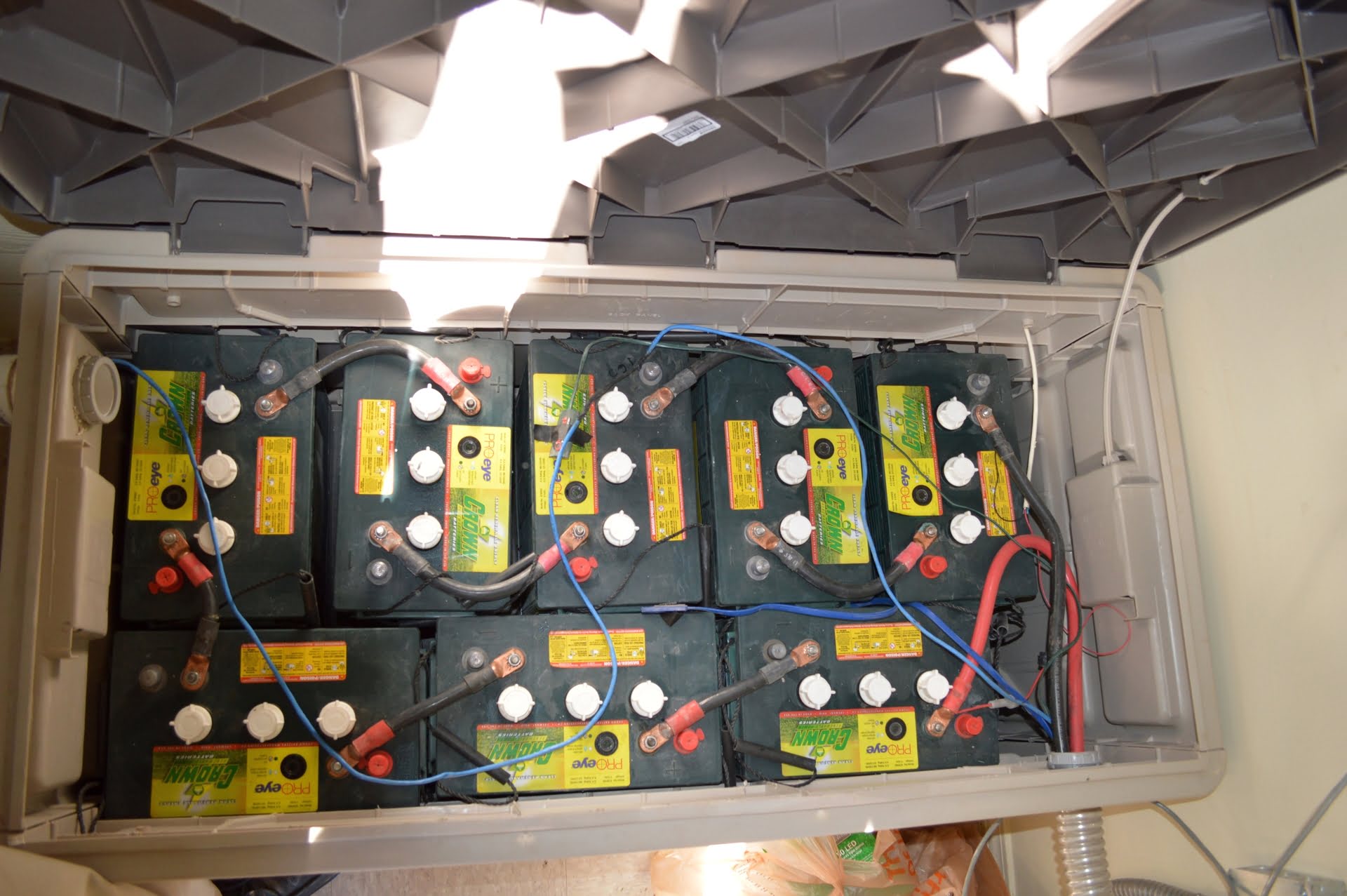
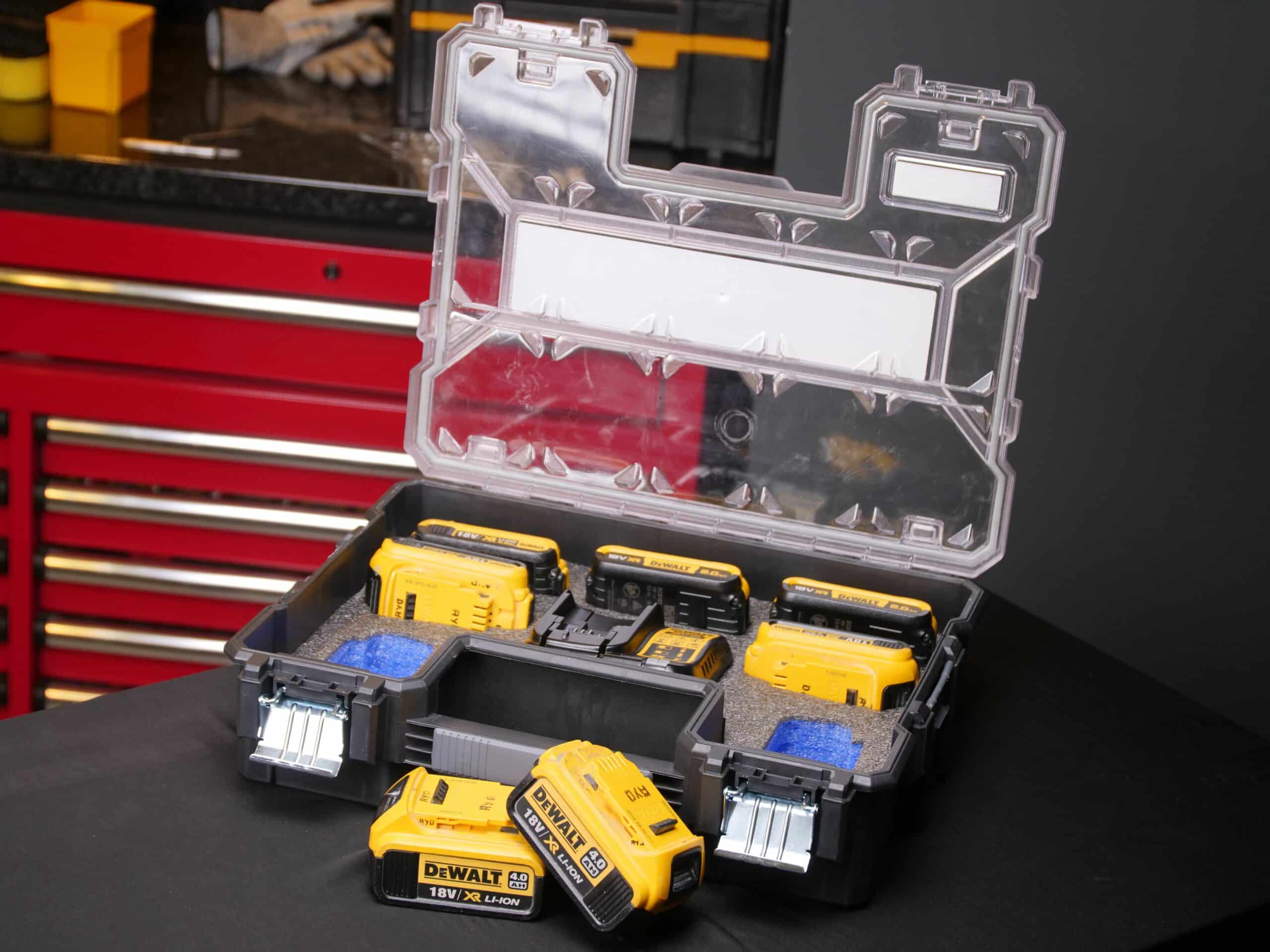

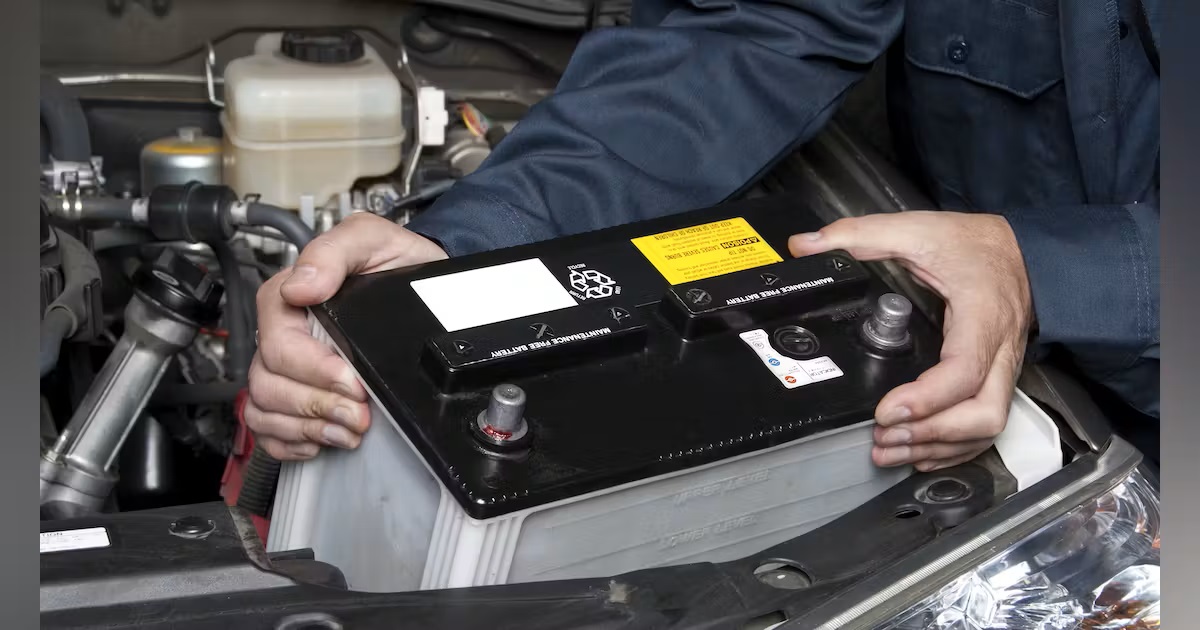
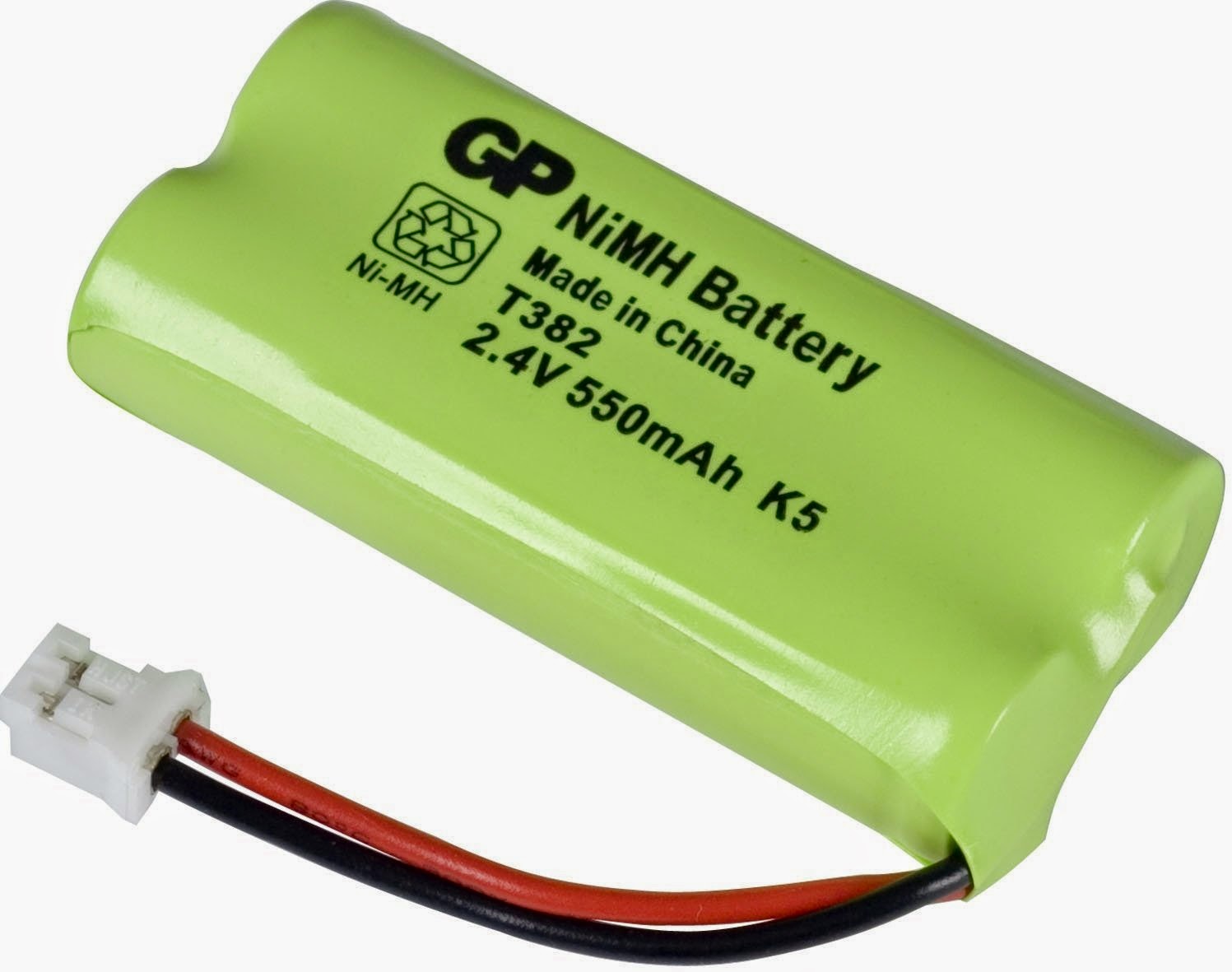

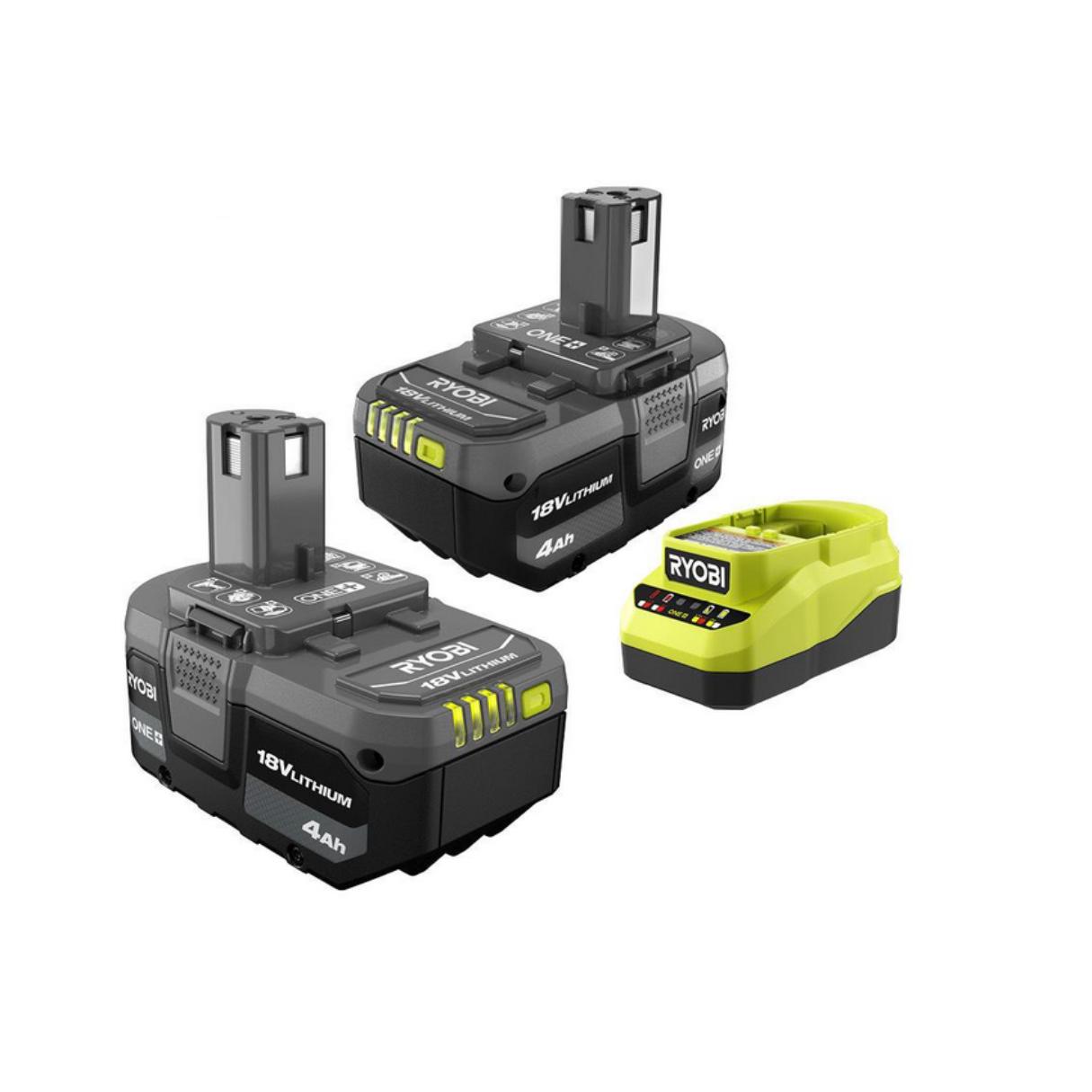
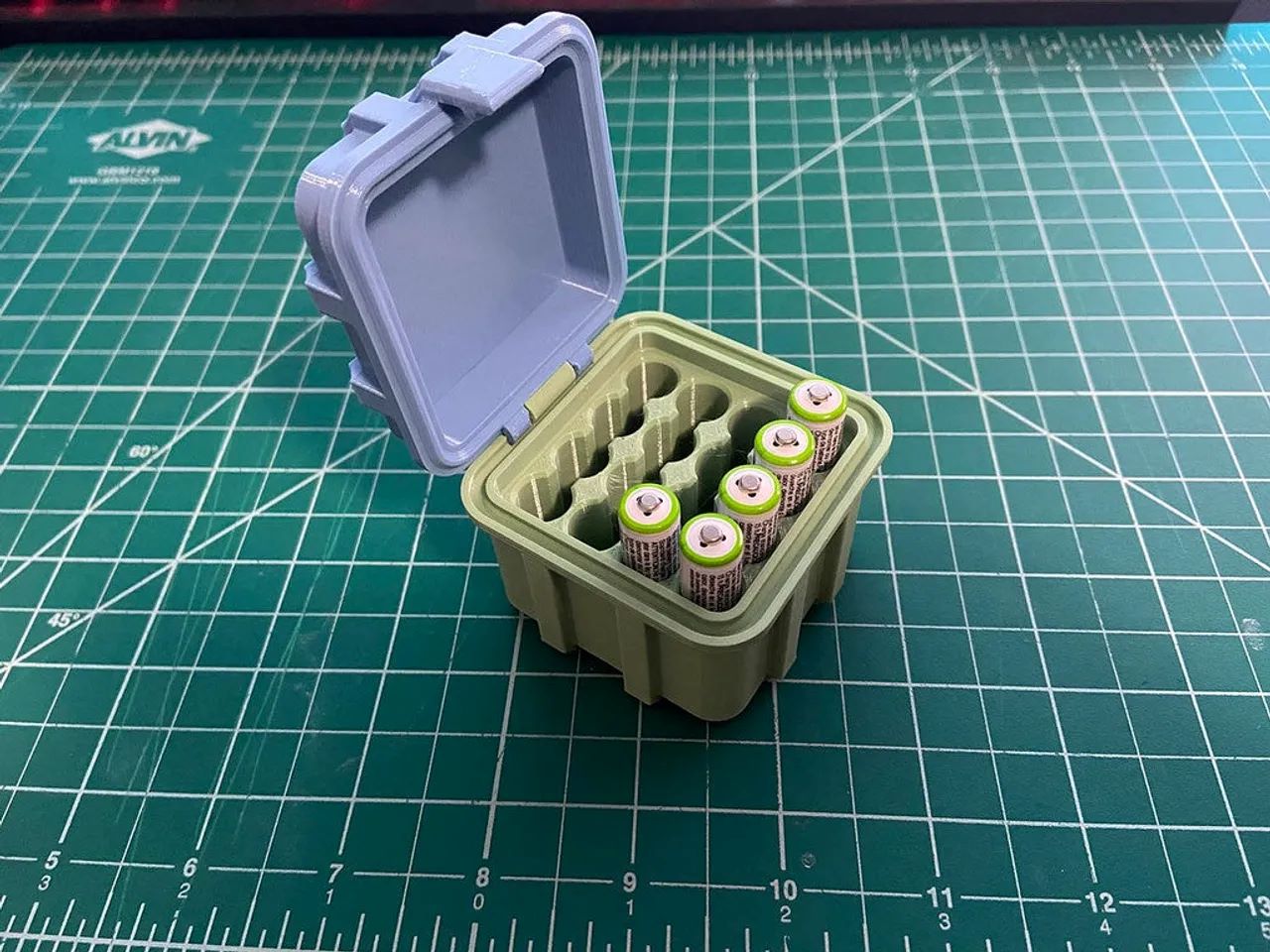



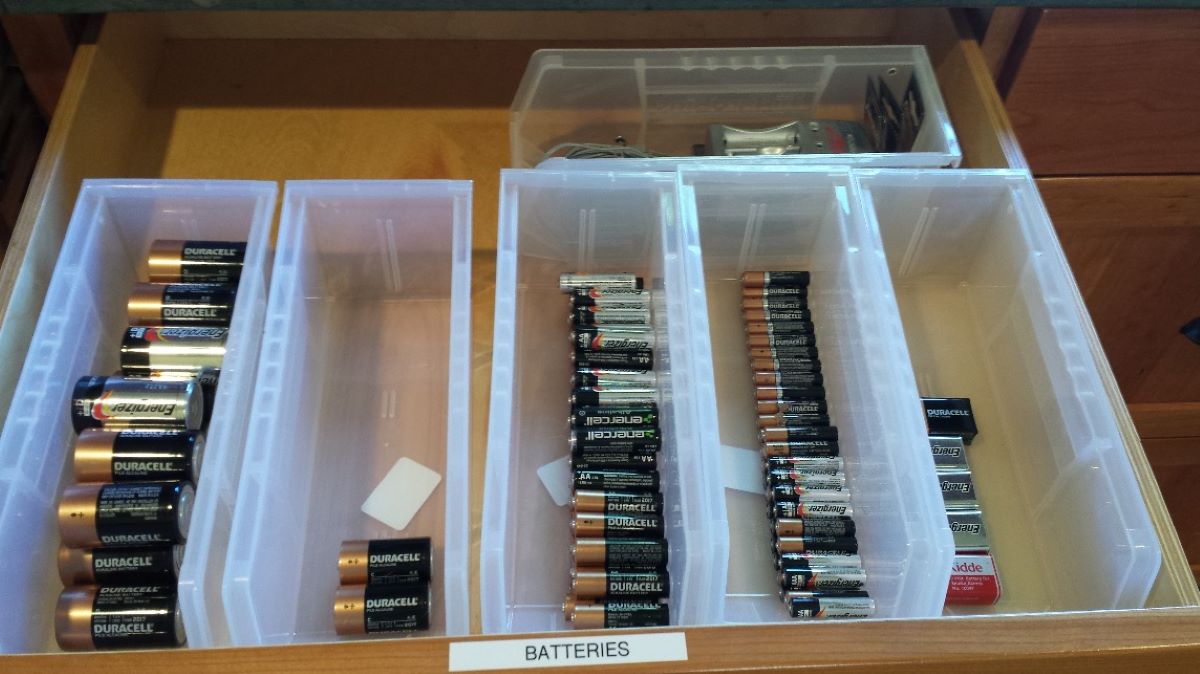

0 thoughts on “How To Store A Deep Cycle Battery”